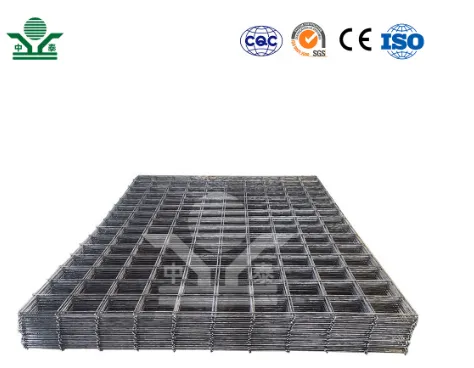Acoustic Fencing A Sound Solution to Noise Pollution
In our increasingly urbanized world, noise pollution has become a significant concern for both public health and environmental integrity. The relentless sounds of traffic, construction, and industrious civilization disrupt the serenity of residential areas and natural habitats. One innovative solution that has garnered attention is acoustic fencing. This article explores what acoustic fencing is, how it functions, its benefits, and its applications in modern society.
What is Acoustic Fencing?
Acoustic fencing is a type of noise barrier designed to absorb, block, or deflect sound waves, thereby reducing noise pollution in specific areas. Typically constructed from sound-absorbing materials such as wood, vinyl, or concrete, these fences are strategically placed around noise sources or in areas where noise reduction is desired. Unlike traditional fencing, which serves primarily aesthetic or security purposes, acoustic fencing is engineered specifically to mitigate sound.
How Does Acoustic Fencing Work?
The effectiveness of acoustic fencing relies on several physical principles related to sound transmission and absorption. Sound travels in waves and can be reflected or absorbed by various materials. Acoustic fences are designed to create barriers that block these waves, minimizing the amount of sound that passes through or around them.
1. Mass and Density Heavier materials tend to block sound better. Therefore, acoustic fences are often constructed from dense materials that prevent sound from easily passing through.
2. Height and Length The dimensions of an acoustic fence also play a crucial role in its effectiveness. Taller barriers can block sound from a greater distance, while longer fences can cover larger noise sources.
3. Absorption Some acoustic fencing is treated with specific materials that absorb sound waves rather than reflecting them, which reduces the overall noise level in the vicinity.
4. Design Features The design of the fence, including any gaps or irregularities, can affect how sound waves are deflected. Acoustic fencing is often designed with minimal gaps and smart angles to enhance its sound-blocking capabilities.
Benefits of Acoustic Fencing
The installation of acoustic fencing presents numerous advantages
acoustic fencing

1. Noise Reduction The primary benefit of acoustic fencing is its ability to significantly reduce noise levels in surrounding areas. This is particularly beneficial for residential neighborhoods located near busy roads, highways, or commercial zones.
2. Improved Quality of Life By minimizing noise pollution, acoustic fencing can enhance the quality of life for residents. Reduced noise can lead to better sleep, lower stress levels, and overall improved health outcomes.
3. Environmental Protection In addition to protecting human health, acoustic fencing can also safeguard wildlife habitats from the disruptive effects of noise pollution. This creates quieter spaces for animals to thrive, encouraging biodiversity.
4. Aesthetic Options Modern acoustic fencing comes in various designs and materials, allowing for creative solutions that blend with the surrounding environment. Whether it's a natural wood finish or a sleek concrete look, acoustic fences can enhance the visual appeal of an area while serving their primary function.
5. Regulatory Compliance Many regions have strict noise regulations that must be adhered to in order to maintain community standards. Acoustic fencing can help businesses and developers meet these requirements while minimizing their impact on nearby residents.
Applications of Acoustic Fencing
The versatility of acoustic fencing allows it to be applied in numerous contexts
- Urban Areas Cities are prime candidates for acoustic fencing, especially around highways and commercial districts. Properly placed noise barriers can enhance living conditions in densely populated areas.
- Industrial Sites Factories and construction sites often generate high noise levels. Acoustic fencing can mitigate the impact on nearby communities, creating a more harmonious relationship between industry and residents.
- Transportation Infrastructure Railways, highways, and airports can all benefit from noise barriers that protect surrounding environments while allowing critical transit functions to continue.
- Parks and Recreational Areas Maintaining natural tranquility within parks and recreational facilities is essential. Acoustic fences can preserve the peaceful ambiance that people seek in these spaces.
In conclusion, acoustic fencing offers a practical, efficient, and aesthetically pleasing solution to the growing concern of noise pollution in modern society. By effectively blocking and absorbing unwanted sounds, these barriers play a crucial role in enhancing quality of life, protecting wildlife, and ensuring compliance with noise regulations. As urban areas continue to expand, the importance of sustainable solutions like acoustic fencing will only increase, paving the way for quieter, more serene communities.
-
Why Galvanized Trench Cover Steel Grating Resists Corrosion
NewsJul.10,2025
-
The Versatility and Strength of Stainless Expanded Metal Mesh
NewsJul.10,2025
-
Load Calculations in Steel Grating Platforms
NewsJul.10,2025
-
Keeping Pets and Kids Safe with Chicken Wire Deck Railing
NewsJul.10,2025
-
Hole Diameter and Pitch for Round Perforated Metal Sheets
NewsJul.10,2025
-
Aluminium Diamond Mesh in Modern Architecture
NewsJul.10,2025
Subscribe now!
Stay up to date with the latest on Fry Steeland industry news.

